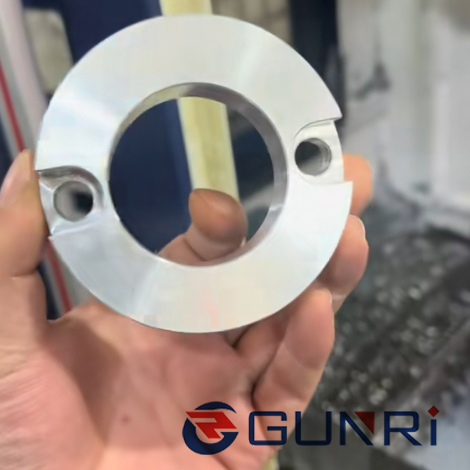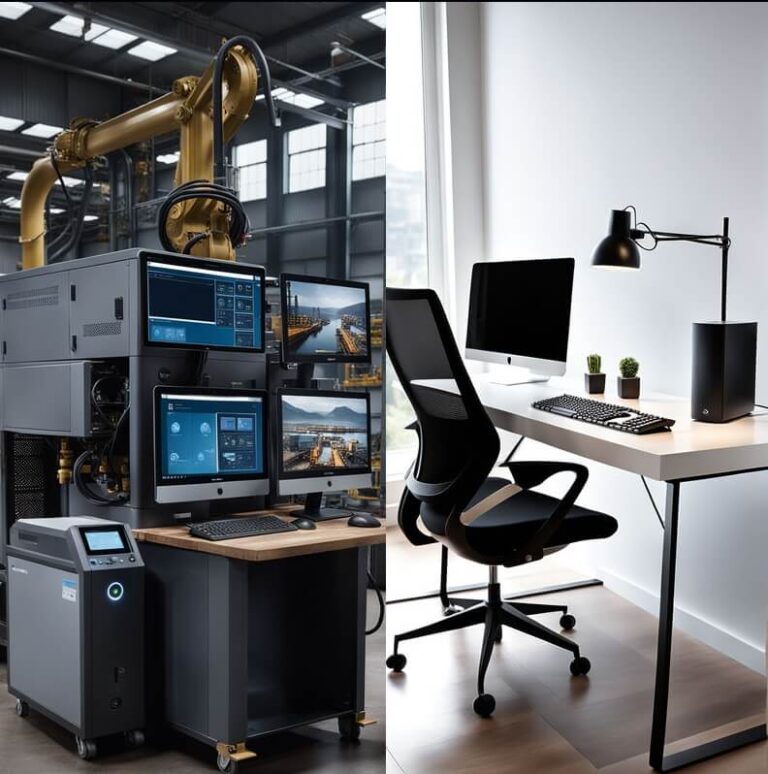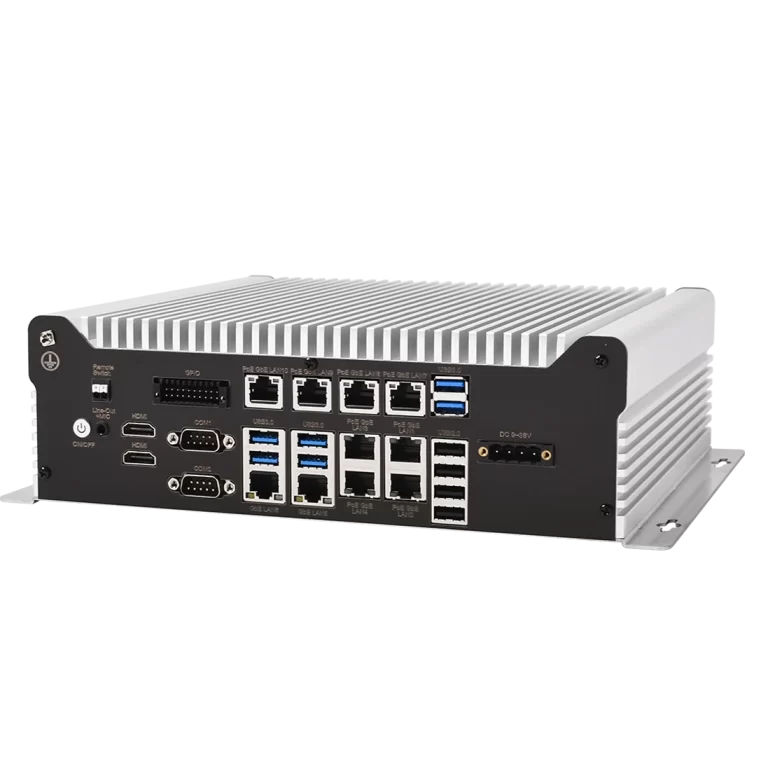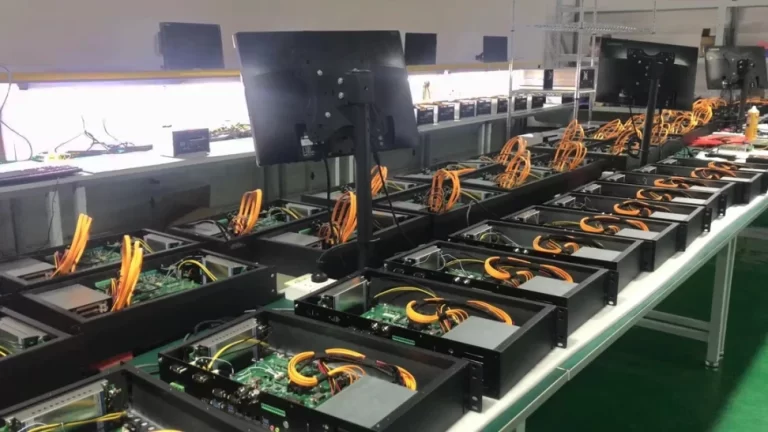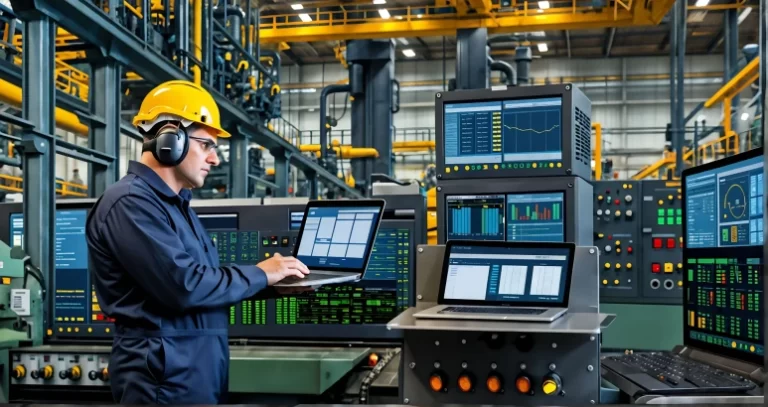Introduction
In the advanced landscape of modern manufacturing, scientific discovery, medical diagnostics, and industrial automation, the capability to move objects with exceptional accuracy and unwavering repeatability is not just beneficial – it’s often essential. Precision linear motion, defined as controlled movement along a straight path with minimal deviation, underpins countless sophisticated applications. From the micron-level manipulation of semiconductor wafers to the sub-micron alignment required in optical systems, achieving reliable, high-fidelity linear motion is a fundamental requirement.
However, attaining this caliber of precision is not the achievement of a single component operating in isolation. It arises from the meticulous selection, seamless integration, and careful optimization of a system of critical components working in harmony. This comprehensive guide delves into the core elements that constitute a high-precision linear motion system. We will explore the distinct functions, key characteristics, and crucial selection criteria for each vital component, providing the knowledge needed to engineer systems capable of superior motion performance. While we discuss “key components,” it’s vital to remember that true precision is invariably the product of the entire system’s synergistic operation.
Understanding the Metrics of Precision Linear Motion
Before examining the hardware, we must first establish a clear understanding of the fundamental metrics used to quantify the performance of any precision linear motion system. These parameters form the objective basis for component selection and system evaluation:
- Accuracy: This defines the maximum difference between the system’s actual achieved position and the intended target position commanded by the control system. It is often specified in terms of Absolute Accuracy (maximum error relative to an ideal reference point) and Incremental Accuracy (maximum error between any two points within the travel range).
- Repeatability: This crucial metric measures the system’s ability to return to the same commanded position consistently over multiple attempts under identical operating conditions. High repeatability is essential for process stability and reliability in automated sequences.
- Resolution: This refers to the smallest increment of motion that the system can theoretically detect or execute. It is fundamentally limited by the resolution of the drive mechanism, the feedback device (encoder), and the control system’s processing capabilities.
- Velocity and Acceleration: These parameters define the maximum speed and the rate at which the system can change speed (accelerate and decelerate). They directly influence operational throughput, cycle times, and the system’s overall responsiveness.
- Stiffness: This denotes the system’s resistance to deflection or deformation when subjected to external static or dynamic forces. High stiffness is critical for maintaining positional accuracy under load, resisting vibrations, and achieving rapid settling times after movement.
- Load Capacity: This specifies the maximum static and dynamic forces (including axial, radial, and moment loads) that the system can handle while reliably maintaining its performance specifications.
- Smoothness / Velocity Ripple: This measures the consistency of velocity during motion, particularly at constant, low speeds. It is a critical factor in applications such as scanning, surface profiling, imaging, and precision dispensing.
- Straightness and Flatness: These geometric tolerances relate to the guiding system itself, defining how closely the actual path of motion adheres to a perfect mathematical straight line (straightness) or plane (flatness).
A firm grasp of these metrics and their often-interconnected relationships is the essential first step toward selecting the most suitable components for a specific precision motion application.
Deconstructing the Precision Linear Motion System: The Key Components
A typical precision linear motion system is an assembly of several core subsystems and components. The performance of the entire system is dictated by the capabilities and interactions of these parts:
1. The Guiding System: The Foundation of Motion
The guiding system provides the structural path for linear movement, constraining motion to the desired axis, supporting applied loads, and fundamentally influencing the system’s accuracy, rigidity, and travel geometry.
- Profiled Rail Linear Guides: These represent the most widely used and highest-performing guidance solution for demanding precision linear motion applications.
- Working Principle: Comprising a precisely manufactured rail and one or more sliding blocks (carriages), these guides utilize recirculating rolling elements – typically balls or rollers – housed within conforming grooves. This design achieves low friction combined with high stiffness and load capacity.
- Types:
- Ball Guides: Employ ball bearings, resulting in point contact (often a 4-point gothic arch configuration). They offer exceptionally smooth motion and are well-suited for high speeds, moderate load requirements, and high-precision positioning.
- Roller Guides: Utilize cylindrical rollers, providing line contact between the rolling elements and raceways. This configuration yields significantly higher stiffness and load capacity, making roller guides the preferred choice for heavy-load applications, environments with high shock or vibration, or where maximum rigidity is paramount (e.g., machine tool axes).
- Advantages: Potential for very high accuracy; exceptional stiffness; high load-carrying capabilities (especially roller types); long operational lifespan; adjustable preload to eliminate clearance, further enhancing stiffness and accuracy.
- Selection Criteria: Size/profile (determines load capacity and rigidity); accuracy grade (influences travel parallelism, height/width variations); preload class (affects stiffness, friction, and lifespan); materials and specialized coatings (for compatibility with vacuum, cleanroom, corrosive, or high-temperature environments).
- Common Applications: CNC machine tools, semiconductor fabrication and inspection equipment, automated assembly systems, coordinate measuring machines (CMMs), metrology instruments, medical imaging and diagnostic devices, robotics.
- Linear Bushings and Precision Shafts:
- Working Principle: Linear bushings, often containing recirculating ball elements, slide or roll along hardened, ground, and polished cylindrical shafts.
- Advantages: Relative structural simplicity; generally lower initial cost; ease of installation and alignment; inherent tolerance for some degree of shaft rotation.
- Disadvantages: Offer significantly lower stiffness, load capacity, and achievable accuracy compared to profiled rail guides, particularly when subjected to moment (overturning) loads. Their performance under demanding conditions is limited.
- Common Applications: Suitable for less critical applications where cost is a primary driver and demands on accuracy and stiffness are moderate, such as desktop printers, packaging machinery, basic automated handling units. Their use in high-precision systems is less frequent.
2. The Drive Mechanism: The Engine of Motion
The drive mechanism is responsible for converting input energy (usually electrical) into the linear force or thrust required to propel the payload along the guide system. Its characteristics fundamentally define the system’s dynamic capabilities – speed, acceleration, force output – and its positioning resolution.
- Ball Screws: A highly prevalent and robust method for converting rotary motion into linear motion.
- Working Principle: An electric motor rotates a threaded screw shaft. A corresponding nut assembly, containing recirculating ball bearings that run smoothly within the helical raceways of both the screw and the nut, translates this precise rotation into accurate linear displacement.
- Advantages: Capable of generating substantial thrust forces; offer high axial stiffness; provide good positioning accuracy and repeatability; relatively high mechanical efficiency compared to other screw types (like lead screws); can possess inherent self-locking characteristics depending on the lead angle.
- Disadvantages: Maximum operational speed is limited by the screw’s critical speed (the rotational speed at which vibrations or ‘whipping’ can occur); inherent mechanical contact generates some level of noise and wear over time; potential for backlash (axial play between screw and nut), although this can be effectively minimized or eliminated using preloaded nut designs (e.g., double nuts); requires coupling to a rotary motor.
- Key Parameters: Lead (linear distance traveled per screw revolution, dictates speed/force relationship); Diameter (influences stiffness and critical speed); Accuracy Grade (C0-C10, impacts positioning precision); Preload Method and Level (affects stiffness, friction, and life).
- Common Applications: Feed axes in machine tools (milling, turning, grinding), injection molding machine actuators, industrial automation stages, test equipment, applications demanding high thrust or high axial rigidity.
- Linear Motors: Offer direct linear motion without intermediate mechanical conversion.
- Working Principle: Operate based on electromagnetic principles, analogous to unfolding a rotary motor. Electrical energy is directly converted into linear force between a stationary part (stator/magnet track) and a moving part (forcer/coil assembly). There is no mechanical contact between these primary force-generating elements.
- Types:
- Iron Core: Coils are wound around iron laminations for high magnetic flux density, resulting in high force output for a given size. However, they exhibit cogging force (an undesirable force ripple due to magnetic attraction between coils and magnets) and a significant magnetic attraction force between the forcer and stator, which must be managed by the guide system.
- Ironless (U-Channel or Flat): Coils are typically encapsulated in epoxy without an iron core, often moving within a U-shaped magnet track. This design eliminates cogging, resulting in exceptionally smooth motion, and has no magnetic attraction force, enabling very high accelerations and fast settling. However, force density is generally lower than iron core designs, and thermal management can be more critical due to coil encapsulation.
- Advantages: Potential for extremely high speeds and accelerations; outstanding dynamic performance and responsiveness; capability for very high positioning accuracy and repeatability (when paired with a high-resolution linear encoder); complete absence of backlash; virtually no mechanical wear in the drive mechanism itself; low acoustic noise operation; potential for compact system integration.
- Disadvantages: Typically entail a higher initial system cost compared to ball screw systems; absolutely require a linear encoder for position feedback and commutation; can generate significant heat, often necessitating active or passive thermal management strategies; highly sensitive to mounting alignment precision; continuous force capability might be lower than similarly sized ball screws, especially for ironless types.
- Common Applications: High-speed, high-precision positioning stages; semiconductor wafer processing (lithography, inspection); precision laser cutting, welding, and marking; high-throughput electronic assembly (pick-and-place); medical imaging gantries; applications where superior dynamic performance, smoothness, or accuracy are paramount.
- Other Drive Methods (Used less frequently in mainstream high-precision systems or for specific niche requirements):
- Lead Screws: Offer low cost and good self-locking properties but suffer from low efficiency, limited accuracy and speed capabilities, and higher wear rates.
- Rack and Pinion: Suitable for applications requiring very long travel distances (many meters), but accuracy, stiffness, and backlash control are generally inferior to ball screws or linear motors.
- Pneumatic/Hydraulic Cylinders: Provide high force output simply and cost-effectively, but achieving precise position and velocity control is significantly more challenging.
- Piezoelectric Actuators: Deliver extremely high resolution (nanometer scale) and very fast response times but are limited to very short travel ranges (micrometers to millimeters).
3. The Measurement/Feedback System: The “Eyes” of Motion
For any precision system operating under closed-loop control (where the actual position is monitored and corrected), an accurate and reliable position feedback device is indispensable.
- Linear Encoders: The gold standard for direct position measurement in high-accuracy linear systems.
- Working Principle: Directly measure the physical position of the moving stage relative to the stationary base using optical (light passing through or reflecting off a finely patterned scale) or magnetic (sensing variations in a magnetic scale) principles. The resulting position signal is continuously fed back to the motion controller.
- Types: Incremental encoders output pulses indicating movement, requiring a homing sequence at power-up to establish a reference position. Absolute encoders provide a unique digital code for every position along the travel, meaning the true position is known immediately upon power-up.
- Advantages: By measuring the position directly at the point of interest (the load or stage), linear encoders effectively bypass and compensate for mechanical errors within the drive train (like ball screw pitch inaccuracies, backlash, thermal expansion/contraction, coupling compliance). This direct measurement approach enables the highest possible level of positioning accuracy and repeatability.
- Key Parameters: Resolution (smallest detectable movement); Accuracy Grade (maximum position error over the measuring length); Output Signal Type (analog sine/cosine or digital TTL/absolute protocols); Mounting Tolerances; Environmental Protection (IP rating for dust/fluid ingress).
- Importance: A fundamental requirement for achieving micron or sub-micron level positioning accuracy. Linear encoders are essential for all linear motor systems and are strongly recommended for high-precision ball screw systems aiming for “full-closed loop” control performance.
- Rotary Encoders: Measure rotational position, typically used in ball screw systems.
- Working Principle: Mounted directly onto the shaft of the rotary motor that drives the ball screw, measuring the motor’s angular displacement.
- Application: Used in “semi-closed loop” control systems, where the linear position of the stage is inferred or calculated based on the measured motor angle and the known lead of the ball screw.
- Limitation: This indirect measurement method cannot inherently compensate for mechanical inaccuracies within the ball screw itself (pitch error, wear), thermal variations affecting screw length, or compliance and backlash present in the coupling and drivetrain. Consequently, the achievable positioning accuracy is typically lower than that of systems employing direct-measuring linear encoders.
4. The Control System: The “Brain” of Motion
The control system orchestrates the entire motion process. It receives high-level motion commands, interprets feedback signals from the encoder, executes sophisticated control algorithms (commonly PID loops and advanced filters), and outputs precise commands to the drive amplifier to manage the motor’s behavior accurately.
- Motion Controller: The central processing unit responsible for tasks like trajectory generation (planning smooth motion profiles), interpolation (coordinating multi-axis moves), managing I/O signals, and executing the core servo control algorithms that ensure the system follows the commanded path accurately and stably.
- Servo Drive/Amplifier: Receives low-voltage command signals from the motion controller and transforms them into the high-power current and voltage required to energize the motor (whether rotary or linear), producing the necessary torque or force to achieve the desired motion.
- Importance: The performance of the control system – including the sophistication of its algorithms, the accuracy of parameter tuning (matching the controller to the physical system dynamics), and the overall control loop bandwidth – directly dictates the system’s dynamic responsiveness, settling time after moves, stability, and its ability to reject external disturbances, all of which contribute significantly to the final achieved precision.
System Integration and Selection Considerations – The Quest for the “Best Fit”
Achieving exceptional precision linear motion is rarely about finding a single “super” component. It’s fundamentally about the synergistic integration and optimal matching of all the key components discussed above. The selection process must therefore adopt a holistic, systems-level perspective:
- Define Application Requirements Rigorously (The First Step): This cannot be overstated. A clear definition of needs is paramount.
- What are the magnitude, direction, and location of all applied loads?
- What is the required travel distance (stroke)?
- What are the target velocity and acceleration profiles?
- What are the non-negotiable accuracy and repeatability specifications? (Often the primary drivers).
- What is the operating environment (temperature range, humidity, cleanliness level, vacuum presence, external vibration sources)?
- What is the expected duty cycle (continuous operation, intermittent moves, dwell times)?
- What are the budget constraints for the motion system?
- What is the desired operational lifespan or total cycle count?
- Component Matching is Critical: Ensure components work together effectively.
- Guidance and Drive Compatibility: The stiffness and accuracy of the linear guide system must be sufficient to support the forces and precision demands generated by the drive mechanism. For example, a high-acceleration linear motor requires guides with high dynamic stiffness to maintain path accuracy under load.
- Drive and Feedback Synergy: To realize the potential of high-resolution drive systems (like linear motors or fine-pitch ground ball screws), they must be paired with equally high-resolution and high-accuracy linear encoders. Mismatched resolutions lead to suboptimal performance.
- Controller and Electromechanics Harmony: The processing speed, control loop update rate, and algorithmic capabilities of the motion controller must be adequate to effectively manage the dynamics of the chosen drive and feedback components, ensuring stable and responsive closed-loop control.
- Acknowledge and Navigate Trade-offs: Component selection frequently involves balancing competing requirements.
- Accuracy vs. Cost: Generally, higher levels of precision (tighter tolerances, higher grade components) correlate directly with increased component and system costs.
- Speed vs. Force: Ball screws typically offer higher force capabilities for their size but are speed-limited by critical speed constraints. Linear motors excel at high speeds and accelerations but may offer lower continuous force density.
- Stiffness vs. Friction/Dynamics: Increasing the preload on guides or ball screw nuts enhances system stiffness but also increases friction, which can negatively impact low-speed smoothness, potentially increase heat generation, and affect dynamic responsiveness.
- Linear Motor vs. Ball Screw: This is a common system-level decision. Linear motors provide superior dynamic performance, zero backlash, and higher accuracy potential but come at a higher cost and may require thermal considerations. Ball screws offer a robust, cost-effective solution with high force capability but have inherent mechanical limitations affecting speed and ultimate accuracy.
- Attend to Critical Implementation Details: Precision is often lost in the details.
- Mounting Precision: Even the most accurate components will fail to deliver specified performance if mounted on surfaces that are not sufficiently flat, rigid, and precisely aligned according to manufacturer recommendations.
- Lubrication Strategy: Correct and consistent lubrication is vital for the longevity, low-friction operation, and sustained accuracy of all rolling element components (guides, ball screws, bearings). The type, amount, and frequency matter.
- Thermal Management: Heat generated by motors, drives, or high-speed friction can cause thermal expansion in system components, leading to positioning errors. Strategies like heat sinking, active cooling, or software thermal compensation may be necessary.
- Vibration Control: Both internally generated vibrations (e.g., from motors) and external environmental vibrations can degrade fine positioning performance. Consider vibration isolation techniques or designing the system with higher inherent stiffness and damping.
Future Trends in Precision Linear Motion
The technology underpinning precision linear motion is in continuous development. Key trends shaping the future include:
- Increased Mechatronic Integration: A move towards modules that combine guidance, drive (often linear motors), measurement (encoders), and sometimes even basic drive electronics into single, pre-aligned, plug-and-play units. This simplifies design, reduces assembly time, and can improve overall performance.
- Embedded Intelligence and Sensors: Integration of sensors for real-time condition monitoring (tracking temperature, vibration, wear indicators) coupled with AI and machine learning algorithms for predictive maintenance alerts, performance self-tuning, and process optimization.
- Advanced Materials and Surface Engineering: Exploration and application of ceramics, advanced composites, and novel coatings to enhance component stiffness-to-weight ratios, improve wear resistance, provide superior corrosion protection, or enable operation in extreme temperatures.
- Pushing the Boundaries of Performance: Ongoing efforts to achieve ever-higher levels of positioning accuracy (nanometer and potentially picometer scales), repeatability, and dynamic performance (higher accelerations and velocities).
- Solutions for Extreme Environments: Development of specialized components and systems designed to operate reliably in challenging conditions such as ultra-high vacuum (UHV), cryogenic temperatures, cleanroom standards, or high-radiation environments.
- Enhanced Connectivity and Data Utilization: Integration with Industrial Internet of Things (IIoT) frameworks, enabling remote monitoring, advanced diagnostics, data logging for process traceability, and integration into factory-wide digital ecosystems.
Conclusion
Achieving true precision in linear motion is not the feat of a single standout component, but rather the carefully orchestrated outcome of a complete system engineered from high-precision guidance, high-performance drives, accurate feedback measurement, and intelligent control. Each element plays an indispensable role, and their selection and integration must be meticulously guided by a deep understanding of the specific application requirements, balanced against a clear awareness of the inherent capabilities, limitations, and trade-offs associated with each component technology.
- Linear guides provide the unwavering foundation, establishing the path accuracy and structural rigidity.
- Ball screws and linear motors serve as the powerful engines, offering distinct profiles of force, speed, and dynamic potential.
- Linear encoders function as the crucial “eyes,” enabling the highest fidelity in position tracking through direct measurement.
- An optimized control system acts as the intelligent “brain,” harnessing the hardware’s potential to deliver stable, responsive, and precise motion.

